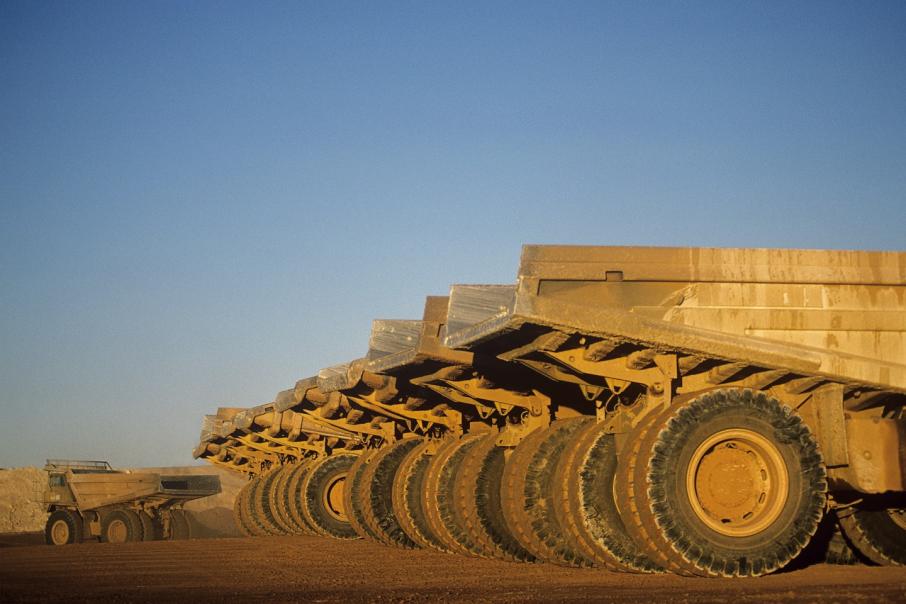A US analyst says economic conditions today match those of times past when hard assets and resources were the pick of the investment classes.


The end of the world is near, if the news emerging from banks based in Melbourne is to be believed.
If, on the other hand, you consider the international view of industries that directly affect Western Australia, there’s a boom around the corner.
Nothing better demonstrates the difference of opinion than recent comments from ANZ chief executive Shayne Elliott that Australian property prices would fall by between 10 per cent and 15 per cent as the country “grinds its way out of recession”.
Given that Mr Elliott’s office, if he is working there during Melbourne’s punishing lockdown, is at the Docklands end of ritzy Collins Street, and he has to watch a city numbed into silence, then it’s easy to understand his gloom.
Other people have made similar comments about earlier economic events, based largely on their observations of what they see out the window; and been wrong more often than right.
One of the best examples comes from the oil industry, when New York-based traders took the snow falling outside their offices as a sign that demand for heating oil and gas would rise.
This was despite the fact the rest of the US was in the middle of a heat wave and demand for heating oil was actually falling on a national basis.
New York is also the starting point to see whether Mr Elliott’s theory applies universally.
Late last month, a New York-based banker laid out a roadmap pointing to a resources boom that could lift WA out of the economic doldrums much faster than the rest of the country.
According to Adam Rozencwajg, a partner in the specialist resources banking and research house of Goehring & Rozencwajg, the seeds have been sown for a resources boom to rival anything experienced in the past 100 years.
In a talk delivered to Swiss bankers in Zurich, Mr Rozencwajg said economic conditions today were no different to those experienced in the late 1920s, the late 1960s and the late 1990s; times when financial markets were booming but heading for a crash, and the global monetary system was failing.
“Each of those times was a great opportunity to switch from financial to hard assets,” he said.
In the 1920s, a stock market boom was ignited by cuts to US interest rates, which led to a 90 per cent fall in share prices in the Wall Street crash of 1929.
Commodities, however, emerged in much better shape, only falling by 40 per cent.
A similar pattern emerged in the 1960s, with financial assets in favour and commodities discounted.
The low point was 1968, with WA down to a handful of operating mines because metal prices had fallen sharply.
Underinvestment in resources prepared the way for the 1970s boom that gave WA its Pilbara iron ore mines, a revived gold sector, and nickel and alumina industries.
The cycle repeated in the late 1990s, with prices down and resources struggling, until woken by the surge of demand from China as it modernised its economy.
Easy credit played a big role in past stock market booms, with investors using low-priced margin loans to play the market, just as they are today.
“The last 10 years have also been characterised by extremely accommodating credit policies following the GFC,” Mr Rozencwajg said.
Low inflation and easy credit were also perfect conditions for ‘asset-light’ companies to succeed, with an example the success of the Uber ride hailing service, which has outsourced ownership of assets to drivers (making it a more attractive business than owning a fleet of taxis).
But that game is ending because inflation is making a return, thanks to the impact of the trillions of dollars created by government economic stimulus programs.
“We believe that the roadmap used by investors for the last 10 years is obsolete,” Mr Rozencwajg said.
“The recent years of benign commodity prices is ending, and going forward we will have to contend with rising prices.
“Inflation is coming back, and that’s something few investors are prepared for.”
Another commodity price force also seen in the 1920s, 1960s and 1990s is starting to re-emerge; namely, a dramatic change to the world’s financial system.
In the 1920s, the world was clinging to the gold standard, which meant every country valued its currency against the gold it owned; a system that played a role in triggering the Great Depression.
In the 1960s, the gold standard started to fade, culminating with the Bretton Woods agreement, which cemented the US dollar as the global currency and led to the US abandoning gold as an official currency measure.
“A keen student of financial history might notice that 1929, 1968 and 1998 all have something in common,” Mr Rozencwajg said.
“They were all years in which the prevailing monetary systems collapsed and radically changed.”
Something similar is happening now.
When combined with the unleashing of inflation, the seeds have been sown for a massive commodity bull market.
“Not only is every single factor that led to previous commodity bull markets now in place but the catalyst, a change in monetary regimes, is also upon us,” Mr Rozencwajg said.
“Gold is already telling us that the shift is here. Commodities that have underperformed for the past decade are emerging from their slumber, and if history is a guide will go through a period of massive outperformance.”
Interestingly, Mr Rozencwajg is not alone in seeing the start of a sea change in the commodity sector as inflation returns and it becomes more rewarding to own hard, physical assets such as metals and property, rather than financial assets.
Investment bank Citi reckons copper is already on the way up, heading for $US3.65 a pound next year after climbing from $US2.10/lb in March to last sales at $US3.04/lb (at the time of writing).
A common theme in bank research notes recently has been the appeal of what’s dubbed the ‘reflation trade’, a term used to cover a shift out of recent favoured sectors into those that will benefit from rising inflation.
WA, with its resources-heavy economy, is already benefiting from the early stages of the reflation trade, which can be seen in the effect it has had on gold and iron ore, with more to come as other commodities make a return.
It’s that background, and the view of a New York banker, which sits diametrically opposed to that of Mr Elliott’s dire property warning.
And while WA will suffer some pain from the collapsing Victorian economy (and collapsing it really is), the international demand for WA’s exports will underpin local growth.













